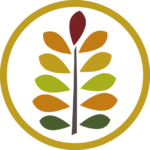 Sugar Pine Cone / Crater Lake National Park
Sugar Pine Cone / Crater Lake National Park
Artwork by Elise Bush
featured in New Exhibit at U.S. Botanic Garden in DC
(Washington, DC) — A new exhibit at the the United States Botanic Garden (USBG) in Washington, DC, displaying artworks depicting familiar, rare, and iconic plants and trees of America’s national parks includes a 12 x 16 inch watercolor by Elise Bush depicting the Sugar Pine Cone (Pinus lambertiana), a species found in Crater Lake National Park.
Flora of the National Parks opened Thursday, Feb. 18 at the USBG on the National Mall. Free and open to the public through Oct. 2, 2016, the exhibition features more than 80 illustrations, paintings, photographs, and other art forms ranging in size from intimate 12-inch pieces to large-scale, 7-foot dramatic panoramas that showcase key plant life in national parks across the country. The USBG is staging the show to mark this year’s centennial of the National Park Service (NPS) and to highlight the diversity of the nation’s flora protected within national parks.
The Sugar Pine, scientific name Pinus lambertiana, is a native of the Pacific Coast and found in Crater Lake National Park. It is the largest species of pine, commonly growing to 130–200 feet tall. It has the longest cones of any conifer, mostly 9–20 inches long.
Botanist David Douglas named the sugar pine in 1827 to honor British pine expert Aylmer Bourke Lambert. Native Americans used the sugar pine’s large, nutritious seeds for food.
Artist Elise Bush, a member of Oregon Botanical Artists, lives in Troutdale, Oregon. Her studio is at the Troutdale Art Center on East Historic Columbia River Highway.
Artworks were selected from among submissions by hundreds of artists last fall for the eight-month show, which is installed in the USBG Conservatory near the foot of the U.S. Capitol on the National Mall, 100 Maryland Ave. S.W., Washington, DC. The USBG is one of the oldest botanic gardens in North America, with more than one million visitors annually. More information about the exhibit, programs, and visiting the USBG is available at www.USBG.gov/FloraoftheNationalParks.
###





 I transferred the drawing into the “sketchbook” and the final watercolor was completed after the bloom had wilted.
I transferred the drawing into the “sketchbook” and the final watercolor was completed after the bloom had wilted.




 I first took the class in June 2014, and it was revelatory. I had never heard of Bargue drawings, sight-size, and the other classical methods she taught. I was trained to construct the figure beginning with ovals and cylinder shapes.
I first took the class in June 2014, and it was revelatory. I had never heard of Bargue drawings, sight-size, and the other classical methods she taught. I was trained to construct the figure beginning with ovals and cylinder shapes. Colleen’s class taught me a whole new way to approach drawing that works not only with the figure, but with plants and landscapes. We started with measuring and blocking in — creating a “constellation” of points and lines. Then we spent a couple of days of defining shadow area shapes, followed filling in the “twilight” zones where dark turns to light. Finally, we gave the figures a “flickering flame,” strengthening certain lines of light and dark.
Colleen’s class taught me a whole new way to approach drawing that works not only with the figure, but with plants and landscapes. We started with measuring and blocking in — creating a “constellation” of points and lines. Then we spent a couple of days of defining shadow area shapes, followed filling in the “twilight” zones where dark turns to light. Finally, we gave the figures a “flickering flame,” strengthening certain lines of light and dark.



 Sugar Pine Cone / Crater Lake National Park
Sugar Pine Cone / Crater Lake National Park
 I purchased a carnivorous Sun Dew plant (Drosera capensis) from one of the art fair vendors. There were beautiful skulls and mounted insects for sale, as well as anatomical art, such as taxidermied mice in little outfits or a bird skeleton wearing a wedding dress. I find Memento Mori art somewhat interesting. But my main interests were the purely scientific specimens, and about half the attendees shared my point of view. It is more about admiration for the beautiful elegance of bones and anatomy and less about a fascination with death and Victorian Steam-Punk Goth art. (I went through my Goth phase in the late 70s.)
I purchased a carnivorous Sun Dew plant (Drosera capensis) from one of the art fair vendors. There were beautiful skulls and mounted insects for sale, as well as anatomical art, such as taxidermied mice in little outfits or a bird skeleton wearing a wedding dress. I find Memento Mori art somewhat interesting. But my main interests were the purely scientific specimens, and about half the attendees shared my point of view. It is more about admiration for the beautiful elegance of bones and anatomy and less about a fascination with death and Victorian Steam-Punk Goth art. (I went through my Goth phase in the late 70s.)